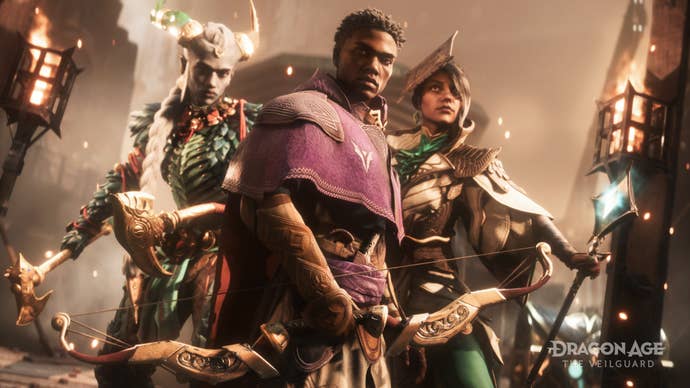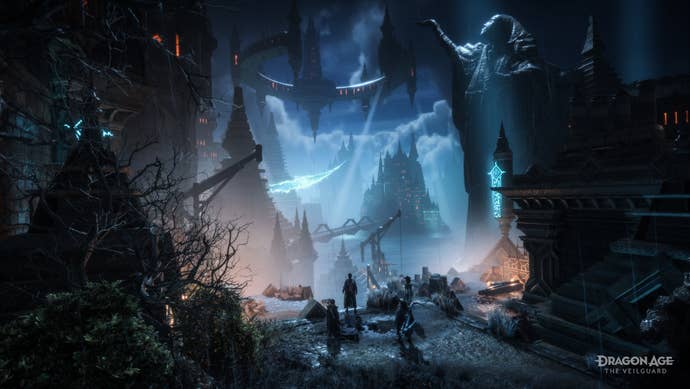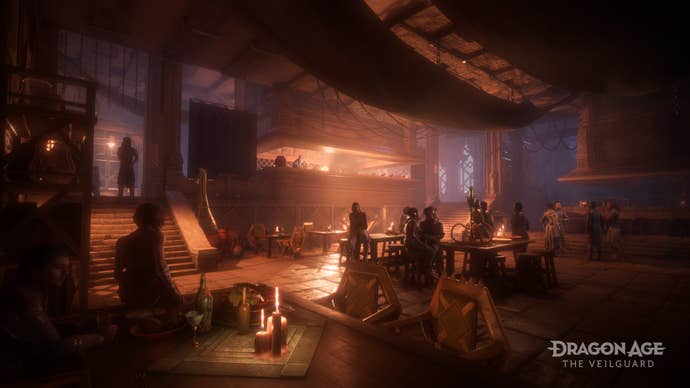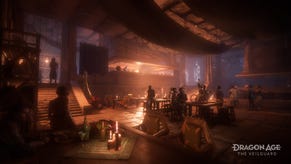Dragon Age: The Veilguard is impressive, beautiful, and will inevitably split opinion
Dragon Age: The Veilguard certainly feels like BioWare at its most confident in a decade, but it's still not going to be a game for everyone.
The latest entry in the Dragon Age series was probably the most talked-about game at Summer Games Fest’s hands-on play days event. I’m known as something of an RPG nerd, so I’d have people coming up to me a lot, launching into: “Have you seen it? Dragon Age?”
Because of standard-issue scheduling struggles, I didn’t see it until right towards the end of the show - but that did afford me an interesting opportunity. I was able to flip the question back on each other member of the media or industry that brought it up, and the reaction was fairly universal in a manner that doesn’t happen all that often - and it was fascinating.
It’d be one of those - “Ahh, yeah…” said with a little grimace, and a tip up in the intonation that always suggests the sentence is about to run on longer. And it would. The Veilguard, people always reacted, looked great, but…
The exact parameters of the buts were always explained in wishy-washy, loose ways - but once I saw the game for myself, I got it. Sitting down to write this, I understand why others struggled to articulate, mid-show, through an 'I’m-so-busy' brain fog. But now, with a bit of time, and distance, and the show over, let me have a crack.

Dragon Age: The Veilguard is going to be a lot of things to a lot of people. If you’re a fan of the characters, the romances, and the world, I actually think that it looks like it could be the best title in the Dragon Age series yet. If you want visual splendor and cinematic flair, this game has more in common with something like EA’s Star Wars Jedi games than any of the other Dragon Age titles. It looks really polished, really strong, really good. But… ahh…
I guess this game is releasing at a weird time. Dragon Age Origins was released as a spiritual successor to games like Neverwinter Nights and, yep, Baldur’s Gate. But over the years, it transformed dramatically from a Captial C ‘CRPG’ to a small ‘cRPG’, so to speak - pursuing more action-based combat and streamlining a lot of choices to make an accessible adventure. This new game continues down that path - but in 2024, it’s difficult to look at Dragon Age and not at least vaguely think about the success of Baldur’s Gate 3. It has doubtless been a topic of conversation at BioWare.
Any opinion split on Dragon Age’s latest is sure to run along these fault lines: on how much you care for, or want, a traditional RPG. Fans of Dragon Age Origins specifically are unlikely to be served here. In fact, this game gave an impression of being most like Dragon Age 2 - though without that game’s small-scale, small-stakes vibe.

The snappy SGF demo (which makes up the first hour or so of the game) shows that the developer has been taking equally impressive cues from other industry darlings. Like I say, the placement of the camera, quite far zoomed out, reminds me of Star Wars Jedi. So, too, does the hack-and-slash of the basic damage dealing to enemies – at least as the Warrior class that I saw in my session. The tempo of basic attacking, weirdly, called to mind the specifically rhythmic Fable 2 and Fable 3’s ‘two button’ combat. Later someone compared it to Arkham, and I sagely nodded along in assent.
An ability wheel can be pulled up, of course, pausing combat temporarily to allow you to trigger up to nine skills - three for the protagonist, and whichever two companions accompany them. There will be a handful of skills beyond three available on an expanding skill tree that has three specialization paths for each ‘core’ class.
So a Warrior can spec on the tree towards being a ‘Reaper’ (big damage, stealing health from enemies, etc), ‘Slayer’ (big swords, big damage), or ‘Champion’ (shield-using, Paladin-like). This is where much of your progression will come from - though this is a system BioWare didn’t show in detail in this demo.
The two franchises have always done a delicate dance of one borrowing from the other, but the moment-to-moment flow of combat feels more actiony in a way that echoes Mass Effect. This looks to something like the Jedi games as Mass Effect 2 was to Gears of War back in the day, basically.

With skills there’s a curious build-and-spend mechanic. So for the Warrior class, attacking enemies normally builds up ‘Rage’, which can then be spent in the ability wheel to trigger the more powerful attacks. While I didn’t see them, my understanding is that this is replicated for other classes but under different names - instead of Rage, Rogues have ‘Momentum’, while Mages have ‘Mana’, of course. The core idea is the same, though: because this resource gates your use of more powerful skills and is built by getting stuck in, you’re encouraged to be proactive in combat. That leads back into that Fable-y, Arkham-y rhythm. Smack, smack, smack, skill. smack, smack, smack, skill.
I really like the look of this combat - but by the same token, I understand that there’s inevitably going to be some hardcore RPG concern. Mass Effect was always arguably the more action-driven BioWare series, and Dragon Age the more traditionally RPG. This feels like a step towards the Mass Effect sort of style - and in many ways, the ME2 vibes are mega here, in this game about building a squad introduced to media for the first time with a showcase of its stunningly cinematic opening.
The cinematic nature of the sequence gives away something, I feel, or what’ll split opinion on this game - it’s totally going to be one of those action games. If you did a family DNA test on The Veilguard, it’d come back with at least a little of Nathan Drake in it. This demo had those beats - zipwires, slidey hills to gate your progress between sections, and giant glowing environmental cues to pick up loot or replenish health potions.
Admittedly, when pressed in a Q&A, BioWare reps noted that this action-packed and entirely linear sequence was not truly representative of what sort of game The Veilguard is - the final game will surely have more open-ended exploration. But it’s not an open-ended game. Instead, this feels like a more linear RPG that’ll offer the breadth in other ways - like in its character creator, which looks absolutely ludicrously detailed and is certainly the best that BioWare has ever built. Or with its cast of characters, who will grow, change, and shift based on your choices - with boundlessly positive or crushingly negative consequences for your decisions.

The world is gorgeously rendered, and immediately far more interesting than any zone from Dragon Age games of the past. There’s a feeling here of a confident BioWare leaning into their strengths - character, world-building, story-telling - and going hard on them. But this tallies interestingly with a game that gives the impression of being slightly less confident in some of its structural design elements.
In a way, Dragon Age: The Veilguard reminded me of another recent big-budget RPG sequel: Final Fantasy 16. FF16 was an excellent game - and I’m getting the vibe that Veilguard will be, too. But 16 is also a game curiously stretched between its allegiances (to series traditions, to role-playing expectations, to a truly voracious fanbase) and its ambitions (to make a truly mainstream action adventure, to cinematic flair, to a scope that doesn’t stretch development thin). The two feel like birds of a feather.
But all of this is very difficult to judge, to be honest, from the prologue. The public can watch about 20 minutes of the hour we saw. That 20 minutes is vital viewing, I feel, particularly to wash away the stench of that wretched trailer. But ultimately, all of it was just from the opening hour of the game. The demo I saw ended with the game’s late title card drop, arguably when the game truly begins.

Questions will now swirl about The Veilguard’s linearity, its RPG chops, and more. In that sense showing only the game’s opening hour to the media, without a read on any of that stuff, feels like a strange comms choice. At the same time, however, I do feel like I got a good sense of what Veilguard is.
Like I said, it’s Final Fantasy 16 vibes. It’s a series trying to respect the past and gingerly step into the future at the same time. It certainly feels like BioWare at its most confident in a decade. I’m very excited to learn more.









